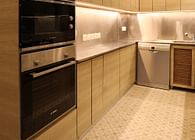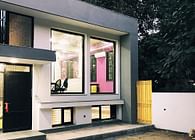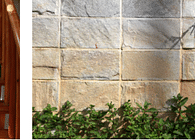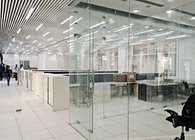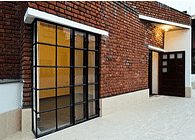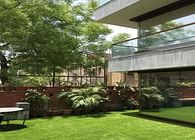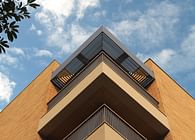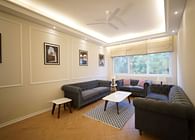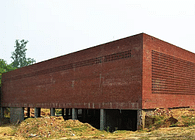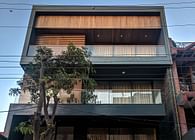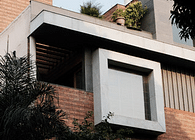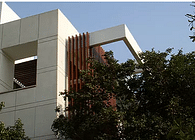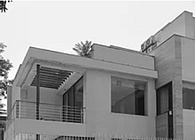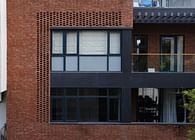
These apartment blocks typically occupy the complete permissible envelope and then embellish the peripheral walls with whatever is currently most fashionable. The resulting urban condition is one dominated by forced facades that are 50ft/15m tall, punctuated only with unusable three feet balconies and large expanses of inoperable glass with little or no protection from the climate.
In contrast, the Cuboid House strategically optimizes all of the area permissible by local code but redistributes it amongst the various floor levels. The lower service floors are extended to the perimeter to allow for a larger ground floor and to maximize the parking at the road level. However, instead of stacking upper plans above each other, the building steps away dramatically as it rises, giving way to a series of decks that open up to views on the north-east.
The deep recesses for the windows and large overhangs temper the fierce climate of Delhi and recall sustainable building traditions while allowing for views from within. Two local stones, one grey (cudappah), the other sandy brown (jaisalmer teak), are used to emphasize the cubic volumes that give this house its name and form its most distinctive visible element.
Status: Built
Location: New Delhi, IN
My Role: Principal Architect
